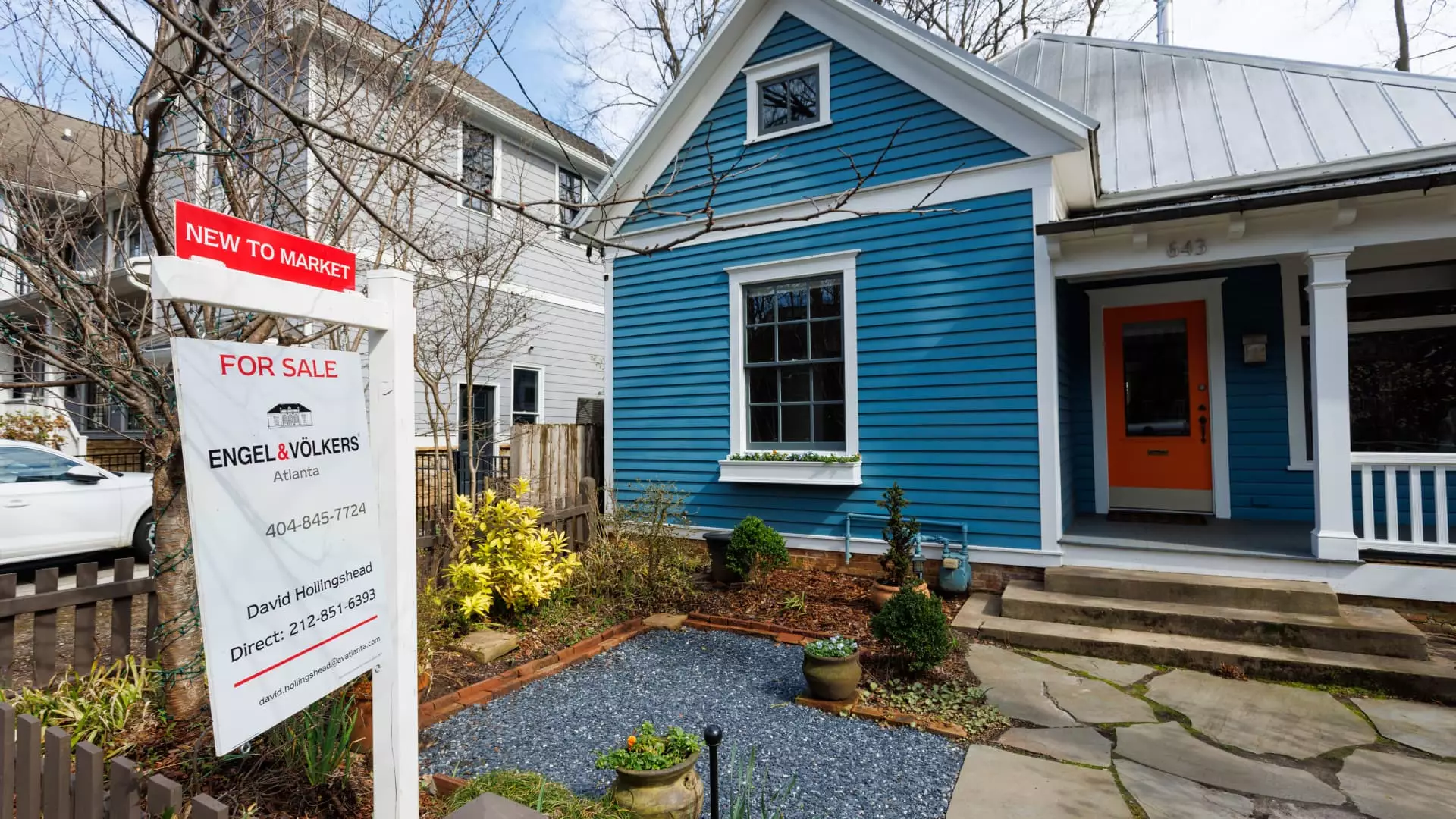The recent report on home sales presents a facade of optimism, with February’s figures showing a 4.2% rise from January’s previously owned homes, resulting in a total of 4.26 million units sold annually, as reported by the National Association of Realtors (NAR). Yet, this apparent growth is deceptive. Analysts anticipated a downturn of 3%, amplifying the narrative of recovery. However, when we peel back the layers, what stands out is that sales are still 1.2% lower when compared to last year, suggesting deeper underlying issues in the housing market’s recovery post-pandemic.
It’s crucial to recognize that these reported increases are based on contracts signed during a period grappling with high mortgage rates—hovering above the 7% mark. For anyone observing the housing market, such fluctuations in monthly statistics can be misleading. A one-month rise does not signal a robust recovery; rather, it may indicate a temporary spike amid stagnant long-term trends. Buyers may be entering the market, but they are doing so cautiously, influenced by conspicuously high costs and uncertainty about future interest rates.
The Dynamics of Supply and Demand
Inventory levels reveal another complex layer to consider. As of February, a reported 1.24 million units are available—a notable 17% increase from the previous year. Yet, with only a 3.5-month supply available at the current sales pace, we remain in a precarious seller’s market. Experts typically designate a balanced market when supplies reach around six months. The tightness of the current market is exacerbating price pressures, with median home prices skyrocketing to $398,400—an alarming 3.8% increase from the previous year, setting records for February.
These price hikes serve as an indicator of demand that exceeds supply; however, they also laser-focus the discussion on affordability—which continues to elude many potential buyers. The affordability crisis in the housing market disproportionately affects first-time buyers and lower-income families, exacerbating inequalities. While first-time home buyers increased their participation to 31% in February from 26% the year prior, their ascent does not eliminate the distinct barriers they face. Rising home prices, coupled with wage stagnation, means a bigger segment of the population is being locked out of homeownership—a cornerstone of the American Dream.
Shifting Buyer Behavior and Market Sentiment
The behaviors of different buyer segments reflect shifting dynamics in real estate. Notably, investors are retreating, comprising only 16% of sales compared to 21% a year ago. The implication here is clear: as speculators pull back, there’s a fundamental question about the sustainability of demand from owner-occupants. All-cash sales remain steady, but the decline in investor-driven purchases signals a troubling trend about the climate of investment confidence.
The case for cautious optimism is further weakened by the results of a separate survey conducted by John Burns Research and Consulting. More than half of real estate agents reported that this spring’s resale market appears weaker than usual—a concerning indicator as the resale index has shown its first drop in four months. This deteriorating sentiment among agents suggests a potential oversupply of optimism that could create hurdles for the housing market in the coming months.
Housing remains a critical bellwether for the economy, but the apparent gains we see today may simply be smoke and mirrors, masking deeper vulnerabilities. An attentive, critical eye is needed to discern the truth from the noise.

